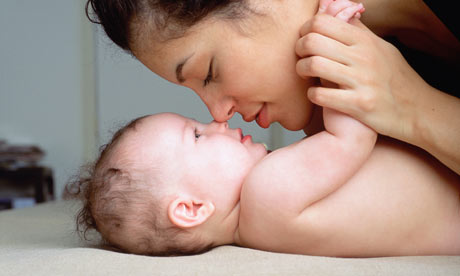
A few weeks ago I took my four-year-old son and baby daughter, Gertie, to see Fireman Sam: Live at the Hammersmith Apollo. But as entertaining as Sam and the gang were, this is not about events in Pontypandy, but rather our own emergency on the journey home.
We were driving back through London - streets busy with Saturday shoppers, us merrily singing show tunes - when Gertie started to cry in an unusual way. Her face was locked in an expression I'd never seen before, and it sent a bolt through me. I tried to comfort her, but she didn't even look at me. She was rigid and staring straight ahead, crying as if something terrifying was happening. Then the crying stopped. Her fists clenched and she started shaking – she was having a fit.
We pulled over and dialled 999. The fitting stopped pretty quickly, but Gertie lapsed into a vacant state – unconscious and floppy, but with her eyes open and unfocused. She didn't seem to be breathing and had turned grey. I held her in my arms, but there was nothing I could do - at least nothing I knew how to do. It seemed I was watching my daughter die and I couldn't think of a single way to stop it from happening. I was filled with a sickening sense that things could be made right, if I just knew how.
Then the paramedic arrived and, without even taking her from my arms or examining her, he told me, with a certainty I still find incredible, that she was having a febrile convulsion (a fit associated with a fever) and that they are extremely common and absolutely harmless.
Though I wasn't initially convinced, Gertie soon gave me cause to take comfort from his calm words. In the ambulance on the way to hospital she tried to suck her thumb. I cried, simply relieved that she could do something, anything. Then in A&E she was more and more alert. I tried a mini-peekaboo behind my hand and a barely perceptible lift of the corners of her mouth gave me an intense feeling of relief. My girl was still in there!
And so I went from perdition to salvation, all in hour. I felt like I'd given birth to her all over again. Watching her play next to the hospital bed later, I was overflowing with wonder, aglow.
Of course, afterwards I was pretty quick to get click-happy and read all I could. Can something so catastrophic in appearance really be completely harmless? I spoke to paediatric consultant Dr John Jackman from the Evelina Children's Hospital in London, who reassured me: "It's a very traumatic event for parents to witness. We often hear them say they thought their child was dying. But children who experience these fits are completely normal and unaffected. There is no evidence of any long-term damage, neurological or otherwise."
They occur in one in 20 children under five - and since Gertie's episode I've heard stories galore from friends and family. Ninety percent of febrile convulsions are what is termed typical; that means they are brief (last less than 10 minutes), affect the whole body, occur in children aged between six months and six years, and the child is fully recovered within around an hour. Around a third of children who have a febrile convulsion go on to have more, and there's not really much parents can do to prevent them from happening.
Interestingly Jackman says there is no evidence to suggest fever reduction actually helps either prevent or treat a seizure. "We know that febrile convulsions are associated with a fever, but we don't know if the fever is the cause. You'll often hear advice to give children who've previously had seizures Calpol as soon as they appear unwell, but there is no evidence to back this up."
Jackman's advice when dealing with a fitting child is to first make sure they are in a safe position (usually on a carpeted floor or a large bed) and when safe to do so, dial 999. Though the fits are harmless it is important to check that it is a febrile convulsion and nothing else. It's also vital to diagnose the cause of the fever – the big worry is always meningitis.
Do not put anything in the mouth – apparently putting wooden spoons or sticks between the teeth is quite a common reaction, but it will only serve to break them. And don't pour cold water on your child, as then they'll just be wet.

